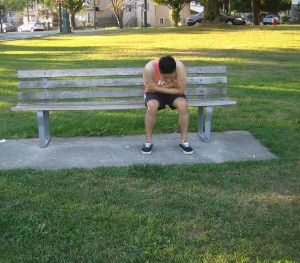The B virus infection is triggered by a herpes virus. It is also called as monkey B virus or herpes B. The virus is usually present among macaque monkeys. It is believed that these monkeys are the natural host of the virus.
The macaques infected with B virus do not have any or only mild symptoms. The macaques that are housed in primate facilities can end up positive for the B virus upon reaching adulthood. Nevertheless, the infection among monkeys can only spread during active viral shedding through bodily fluids.
It is rare for the infection to occur among humans. Once it occurs, the infection can result to significant brain damage or even death if not promptly treated after exposure. Infection among humans is usually caused by animal bites or scratches or even from mucosal contact with bodily tissue or fluid.
Signs and symptoms

The monkeys who are infected by the B virus do not have any or only mild symptoms. Among humans, the B virus infection can lead to acute ascending encephalomyelitis which results to death or significant neurological impairment.
The onset of the disease in humans is usually within a month of exposure, but the actual incubation period can range from 3-7 days. The symptoms linked with the B virus infection include the following:
- Vesicular skin lesions at or close to the site of exposure
- Flu-like pains and aches
- Localized neurological symptoms close to the wound site such as numbness, pain and itching
- Fever and chills
- Shortness of breath
- Headaches that last more than 24 hours
- Fatigue
- Poor coordination of the muscles
The initial symptoms include headache, fever and vesicular skin lesions at the area of exposure. The neurological symptoms tend to vary. Take note that respiratory involvement and even death can occur 1 day up to 3 weeks after the start of the symptoms.
Management
Even though the B virus infection in humans is rare, once it occurs, it is often deadly unless promptly treated. Around 70% of untreated cases result to death due to complications linked with the infection.
The key in controlling the B virus infection among humans is diligence in pinpointing possible exposures followed by suitable first aid measures and rapid diagnosis of the infection.
First aid must be started right away with the following:
- Thoroughly clean the exposed area by washing and scrubbing the wound or area using soap, concentrated detergent solution, chlorhexidine and water or povidone-iodine.
- This is followed by irrigating the cleaned area using running water for 15-20 minutes.
